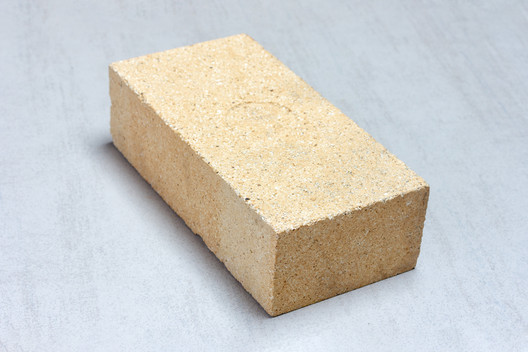
Ranging from yellow, to gray, to traditional red and orange, bricks are ubiquitous in many of our cities and widely used in construction. Briefly, the manufacturing process of traditional bricks involves molding clay and firing it in ovens, facilitating the creation of solid blocks, perforated blocks, cobogós, tiles, and other shapes. Ceramic bricks are inexpensive; easy to find; boast strong resistance, thermal inertia, and finish; and do not require such specialized labor for construction. But if the installation is done near sources of high heat, the common brick will end up cracking and breaking, making refractory bricks more suitable. But what does that mean?

It may seem contradictory that a material that has been burned in ovens at temperatures of more than 1000° C cannot withstand high temperatures. In fact, the main problem is thermal shock. When the common brick comes into contact with a heat source, it expands quickly. When the source ceases (the fire extinguishes, for example), the material contracts. These sudden changes in temperature affect the stability of the structure and can form cracks and other serious problems. Refractory materials are those that can withstand high temperatures without the heat damaging their structure, resistance, or thermal conductivity. In the case of bricks, the chemical composition of refractories is different from that of regular bricks, which also influences their color and thermal conductivity.


For domestic uses, such as ovens, barbecue grills and fireplaces, the refractory bricks used are usually composed of clay containing mainly alumina and silica, elements capable of withstanding high temperatures. While alumina has reflective qualities, silica is an excellent insulator. The more alumina present in the mixture, the higher the temperature that the brick will endure (an essential consideration for industrial uses) and the more expensive the piece will be. Silica has a more grayish tint, while alumina has a more yellowish appearance.

In addition to the technical function, there are architects who use exposed refractory bricks to build and coat surfaces. In the Tropical House Urveel project, developed by Design Work Group, refractory bricks were used in several ways. Sometimes porous like an "Indian jali," sometimes opaque and textured, sometimes forming a patio and sometimes acting as a background, these bricks were seen throughout the house.


In addition to the bricks themselves, the mortar used must also withstand high temperatures. Thus, it is usually composed of special aggregates such as vermiculite and refractory clay. Like the bricks, it can also contain alumina (Al2O3), mullite-zirconia, and other materials.
It is always important to emphasize that, when designing or building structures that will come in contact with fire, it is essential to pay attention to the materials used in concert with local regulations. This amount of care is a little price to pay to avoid material losses or more serious accidents. Seeking advice from experts and manufacturers is always essential.








